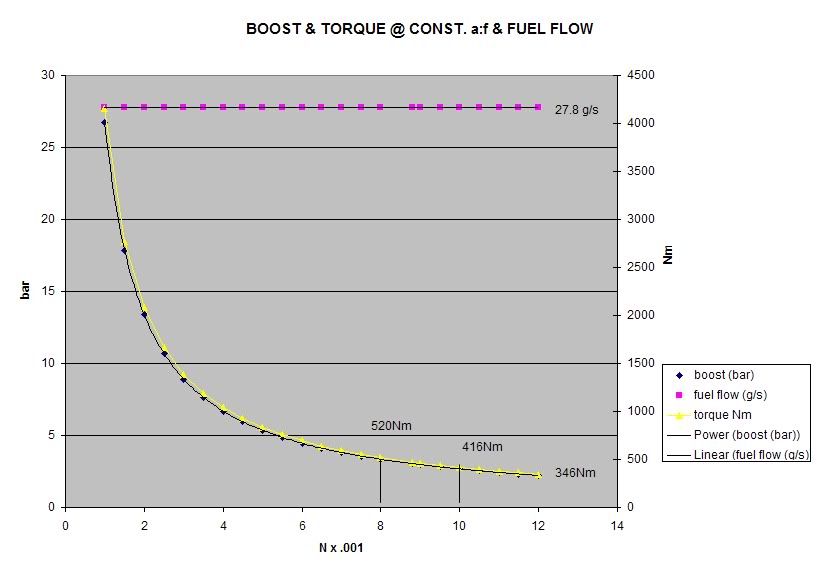You have little faith in your german compatriots whit blue.

The BOSCH technology was there to begin with. It just hasn't been fully exploited up to now.
The 500 bar pressure is surprising for me though, to be honest.
I don't know much about DI, but i would think the capability is there for other companies. After all their injection systems are based on the same piezo electric principles.
Anyway, 12,000 rpm with 27.8 g/s is about a boost pressure of 1.2 bar gauge. Pretty low boost setup.
If a team plays around with the compressor characteristics they can make maximum power at much lower speeds with max fuel flow, increasing the torque.

This a little chart i made. It should not be confused with a dyno plot.
It's a plot of the possible engine characteristics of where maximum power of 585hp can be produced.
This is maxed out fuel consumption of 27.8 g/s and stoichometric air to fuel.
For instance a team may chose to limit the engine speed at 10,000rpm instead; choosing a turbine and compressor wheel accordingly that will allow them to get maximum power of 585hp at that speed.
This means more air mass (pressure to be increased) would be required to compensate for the reduced volumetric flow of air.
The lower speed and increased pressure also bodes well for increasing the maximum torque.
Theoretically as the power is held constant, the torque should increase with decreasing engine speed. Though realistically the engine wont spin at 2000rpm and make maximum power, the compressor and turbines don't work that way.
I am not sure of what benefits or disadvantages are there with purposely lowering the engine speed range and increasing the boost to increase torque. It could work well at tracks like monaco. But i have a feeling the heat rates would be very high.
Since this chart doesn't take into account the ability of the inter coolers to cool the increasingly hot air to the required intake temperature, much less the ability of the cooling water to drive of the heat from denser more thermally conductive air charge, moving at a slower speed, increasing heat rates, in the cylinders.




